The Boy Scouts of America (BSA) is tied to one of the largest sexual abuse cases in U.S. history, with more than 82,000 survivors filing claims. To respond, a $2.7 billion settlement trust was created, marking the biggest case of its kind in the nation.
Yet in 2025, thousands of survivors are still waiting for their payments. For many, the delays create real financial strain, which is why lawsuit funding has become an essential bridge providing immediate support while the settlement process continues.
What Is the Boy Scouts of America Lawsuit
The Boy Scouts lawsuit stems from decades of sexual abuse allegations involving troop leaders and members. After several states passed laws allowing older cases to move forward, thousands of victims filed claims.
In 2020, the BSA filed for bankruptcy to manage the overwhelming number of lawsuits. As part of its Chapter 11 reorganization, the Scouting Settlement Trust was established to handle payouts for survivors.
This trust is funded by contributions from the national Boy Scouts organization, local councils, insurers, and affiliated groups such as churches.
Boy Scouts Settlement Update 2025
The settlement process remains lengthy and layered, with several factors shaping how and when survivors will finally be compensated.
Payout Range
Survivors are projected to receive settlements ranging from $3,500 to $2.7 million. The final amount depends heavily on the severity of abuse, the documentation provided, and how each claim is classified within the trust system.
Funds in Escrow
As of mid-2025, nearly $1.4 billion is locked in escrow. These funds cannot be released until ongoing appeals are resolved, which continues to slow down distribution for claimants.
Delays in Distribution
Multiple appeals from insurers, religious organizations, and other stakeholders have created obstacles. These legal battles directly affect how quickly survivors receive compensation, leaving many still waiting for significant payouts.
First Determinations
A portion of claims has already gone through initial review, and some survivors have received smaller, preliminary payments. However, larger second round disbursements remain stalled until the appeals process concludes.
What Is the Average Payout for the Boy Scout Lawsuit
There is no fixed “average” payout since every case is unique. However, based on settlement structures.
- Expedited claims may result in payments of about $3,500.
- Moderate cases could lead to settlements in the tens of thousands to the low six figures.
- Severe abuse claims with long-term trauma or medical documentation may reach into the hundreds of thousands or even millions.
Compared to other cases, such as the Catholic Church settlements or USA Gymnastics lawsuits, the Boy Scouts settlement is historic in size, but individual payouts vary widely.
Why Victims Face Delays in Getting Paid
Despite the settlement being finalized, many survivors still face long waits before seeing compensation. Several factors continue to stall the process.
Bankruptcy Appeals
Insurance companies, churches, and other organizations have filed objections to the settlement plan. These appeals must be resolved before larger payments can move forward, creating a major bottleneck.
High Volume of Claims
With more than 82,000 claims submitted, the review process is monumental. Each case must be carefully assessed, which slows progress and stretches the timeline for payouts.
Funds Locked in Escrow
A significant portion of the settlement money is currently frozen in escrow. Until the courts settle outstanding legal disputes, this money cannot be released to survivors.
Age and Urgency
Many claimants are now in their 60s, 70s, or 80s. For these survivors, time is critical, and the delays add additional stress to an already difficult situation.
Because of these obstacles, many survivors turn to pre-settlement funding as a way to secure financial relief while waiting for their claims to be resolved.
How Lawsuit Funding Helps Survivors While They Wait
A Boy Scouts lawsuit loan, also called pre-settlement funding, can provide financial relief during these delays.
Unlike traditional loans, this type of funding is non-recourse, which means
- You only repay if you win your settlement.
- There are no credit checks or income requirements.
- Approval can happen within 24–48 hours.
Survivors often use this funding for
- Medical treatment and therapy.
- Rent or mortgage payments.
- Daily living expenses like food, gas, and utilities.
- Debt relief during the waiting period.
Conclusion
The Boy Scouts settlement remains one of the most significant abuse-related cases in American history, not only because of its size but also because of the number of lives it touches. While the $2.7 billion trust represents an important step toward accountability, the process has been marked by appeals, delays, and uncertainty for survivors who deserve closure.
As 2025 continues, questions around payout amounts and timelines remain at the center of discussion. For many, the wait is more than a legal delay it is a barrier to healing and stability. Keeping track of developments and understanding the factors that influence distribution is essential for anyone following this case.
Frequently Asked Questions
When will Boy Scout victims get paid in 2025?
Final payouts are delayed until the appeals process is complete. Initial determinations are happening, but larger distributions depend on the release of escrowed funds.
What is the Boy Scouts of America settlement trust?
It is a $2.7 billion trust created during BSA’s bankruptcy to compensate survivors of abuse.
What is the average payout for Boy Scout victims?
Payouts vary from $3,500 to $2.7 million, depending on severity, documentation, and other factors.
Why did the Boy Scouts file for bankruptcy?
The organization filed in 2020 due to the overwhelming number of abuse claims, which could not be resolved without reorganization.
What was the Supreme Court’s decision on the BSA case?
So far, most appeals have been handled by bankruptcy and appellate courts. If escalated, the Supreme Court may review appeals related to the settlement plan.

